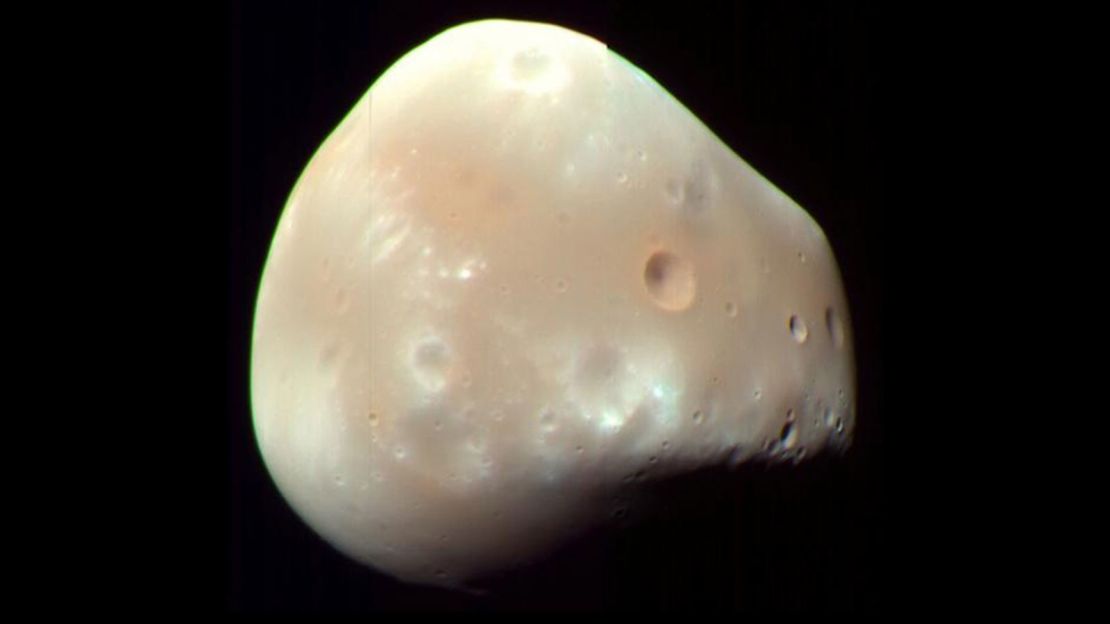Mars has two small, funky-looking moons with strange orbits, and they may suggest that the red planet once had rings, like some of the larger planets in our solar system.
The two lumpy moons, Phobos and Deimos, were both discovered in 1877 and named after the sons of Ares from Greek mythology (Mars is named after the Roman god of war, which is Ares in Greek). Phobos means fear or panic and Deimos means dread.
They were long thought to actually be asteroids captured by the planet’s gravity. Both appear to be similar in composition to blackish carbonaceous chondrite asteroids. But scientists realized that the moons are nearly in the same plane as the Martian equator. This suggests that they formed around the same time Mars did around 4.5 billion years ago.
While they’re both irregular, Deimos is a little more of an oddball than Phobos — its orbit is tilted by two degrees.

“The fact that Deimos’s orbit is not exactly in plane with Mars’s equator was considered unimportant, and nobody cared to try to explain it,” said Matija Ćuk, lead study author and research scientist at the SETI Institute. “But once we had a big new idea and we looked at it with new eyes, Deimos’s orbital tilt revealed its big secret.”
The findings were presented during the 236th Meeting of the American Astronomical Society, which is being held virtually this week during the pandemic.
A cyclical fate for Mars’ moons?
The researchers looked at Phobos, which loses height as it interacts with Martian gravity over time. Eventually, its orbit will be too low and Mars will essentially rip it into pieces that form a ring around the planet. It’s estimated that this will happen within 50 million years.
What if Mars once possessed other moons that met the same fate? Over time, the rings would form new, smaller moons in a seemingly endless cycle.
Something pushed Deimos out away from the planet and caused it to tilt — like interacting with another, larger moon.
Phobos, slightly larger than Deimos, is only about 3,700 miles above the Martian surface — no known moon in our solar system is closer to its planet. Being so close, Phobos completes three orbits around Mars in one Earth day, while Deimos, which is more distant, takes about 30 Earth hours to complete an orbit.
But what if Phobos wasn’t always, well, Phobos? What if it was once much larger and went through a few cycles where it went from a moon to a ring, and back again?
The researchers believe that Phobos once had a grandparent 3 billion years ago that they called proto-Phobos — likely 20 times more massive as the small moon is now. Over the course of a few moon-ring cycles, it became Phobos — which would explain why some researchers believe it only formed about 200 million years ago.
A prominent ring around Mars would have pushed proto-Phobos outward, away from the planet. This would have also affected proto-Phobos’ orbital resonance with Deimos and pushed it further from Mars as well.
The Japanese space agency, JAXA, plans to send a spacecraft to Phobos in 2024 to collect samples from the surface and return them to Earth. This may reveal more about the moon’s past.





